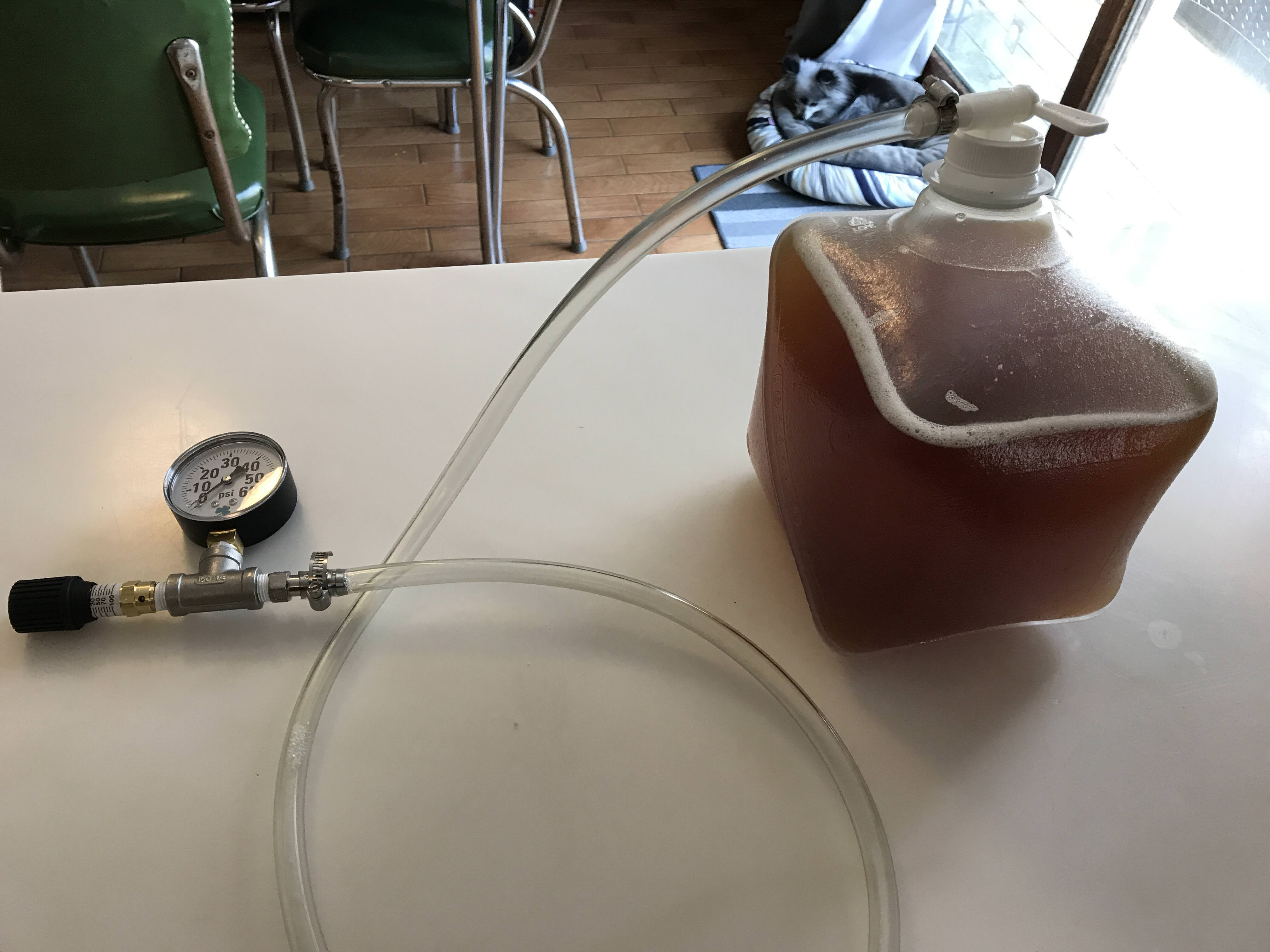The biggest problem with homebrewing British cask ale the "proper" way is that (even with a using a cask breather) you have to drink the beer pretty quickly due to oxidation. Unless you are having a party, it is hard for most of us to drink 5 gallons of homebrew in a week. One way homebrewers have dealt with this (especially in the UK) is to package the beer in a flexible plastic polypin / cubitainer (which has been discussed here a few times). If you attach them to a beer engine (either a real beer engine or an RV water pump) these flexible containers collapse as the beer is pulled out and no air is introduced into them, so they can theoretically stay in proper condition longer.
One downside is they they aren't built for pressure, so you have to remember to vent them before they burst. Now I know you can do real cask ale in a keg and not have to worry about that as much, but I don't have or want a kegging system (I bottle everything). In the UK they have pressure barrels with pressure relief valves on them, but these aren't available in the US. So I decided to try venting with a spunding valve and so far it seems to be working:

After the beer (in this case a best bitter) finished fermenting I transferred one gallon (primed with sugar appropriate for cask bitter) to a cubitainer and pushed out all of the air and set my fermentation chamber to 68F. After a few days the CO2 had built up and the cubitainer was rock hard and ready to burst. I attached the spunding valve and had the pressure set fairly high. I opened the valve on the cube and then slowly adjusted the pressure relief valve until I heard a faint hiss and stopped there.
So far so good. The cube is still pressurized, so no major leaks in the system.
This was a trial run to test if it would even work. If it holds the pressure and properly lets off the excess, the next test will be natural carbonation. Instead of fully fermenting, you transfer with a few gravity points left and let the beer naturally carbonate as it finishes fermenting. This will be potentially useful for two other applications:
One downside is they they aren't built for pressure, so you have to remember to vent them before they burst. Now I know you can do real cask ale in a keg and not have to worry about that as much, but I don't have or want a kegging system (I bottle everything). In the UK they have pressure barrels with pressure relief valves on them, but these aren't available in the US. So I decided to try venting with a spunding valve and so far it seems to be working:

After the beer (in this case a best bitter) finished fermenting I transferred one gallon (primed with sugar appropriate for cask bitter) to a cubitainer and pushed out all of the air and set my fermentation chamber to 68F. After a few days the CO2 had built up and the cubitainer was rock hard and ready to burst. I attached the spunding valve and had the pressure set fairly high. I opened the valve on the cube and then slowly adjusted the pressure relief valve until I heard a faint hiss and stopped there.
So far so good. The cube is still pressurized, so no major leaks in the system.
This was a trial run to test if it would even work. If it holds the pressure and properly lets off the excess, the next test will be natural carbonation. Instead of fully fermenting, you transfer with a few gravity points left and let the beer naturally carbonate as it finishes fermenting. This will be potentially useful for two other applications:
- "real lager"--naturally carbonated lager beer that follows the Reinheitsgebot which doesn't allow for priming sugars. I am particularly interested in using this technique for Franconian Kellerbiers, which are the closest lager equivalents to cask ale, as they are served by gravity with lower pressure
- heavily dry hopped NEIPAs, which is a notoriously bad style for bottling due to oxydation. Add bagged dry hops to the cube, fill with beer the still has a few gravity points left and let the process of natural carbonation scrub the oxygen. Cubitainers are super cheap, so this would let people who primarily bottle package their beer for longer term storage without getting a kegging system--at least theoretically.


